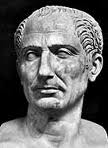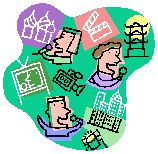The 80-year-old news-magazine Newsweek recently announced that come January 1, 2013 it would become an all-digital publication. This decision implies that its “electronically generated” content could very well become more immediate, rather than weekly. Will it then change its name from Newsweek to NewsToday or NewsRightNow?
The point is the advent of electronic media—starting with the commercial introduction of the telegraph in 1844—has over a period of 170+ years re-shaped the news and information landscape, and, in turn, the role of journalism and journalists. Electronic media have also spawned paradoxes and contradictions that are challenging to reconcile.
One widely accepted definition is that journalism is the first draft of history. But, then, what is history? Is history what journalists or historians say it is? Certainly at this point in time we know that both historians and journalists can get it wrong—e.g., “the world is flat”– and that artifacts (i.e., hard evidence that has not been given a journalistic voice) provide more “history” than what is written or said by those who write it or say it, and by those who have been given the authority, status, or role to write it or say it (e.g., clergy, elected officials, non-elected officials, even academics). From tribal times to now, in the absence of facts, people make things up. We also know from contemporary times that journalists “make things up” or “plagiarize” and often report what they want to or are told to report.
The first “officially” recognized journalism venue was the Acta Diurna of Julius Caesar’s time. But how do we characterize the cave drawings found in southern France? Are these pictures, particularly those of the supposed “hand” of the “drawer” also not journalism? Are these icons not a story told from the vantage point of a culture of 30,000 BC? Is it not as journalistically valid as a personal blog on the Internet today?
 Since Caesar’s time many print and electronic venues for news have evolved: newspapers, consumer and trade magazines, radio, broadcast television, cable television, the Internet, and more recently, a host of electronic mobile devices. Today, as opposed to just 60 years ago, people who have access, especially in western cultures, receive their news from a panoply of media, depending on the kind of content, time of day (now transcended by electronic media), or place. Globally, though, access to news and information is not evenly distributed, e.g., only about a third of the world’s population (as of the end of 2011) had access to the Internet.
Since Caesar’s time many print and electronic venues for news have evolved: newspapers, consumer and trade magazines, radio, broadcast television, cable television, the Internet, and more recently, a host of electronic mobile devices. Today, as opposed to just 60 years ago, people who have access, especially in western cultures, receive their news from a panoply of media, depending on the kind of content, time of day (now transcended by electronic media), or place. Globally, though, access to news and information is not evenly distributed, e.g., only about a third of the world’s population (as of the end of 2011) had access to the Internet.
The role of journalists and news organizations has changed. They are no longer the only gatekeepers of important information. Since the end of WWII the world of news and information has moved from mass communication, to segmented audiences, to one-on-one interaction. Just as the printing press gave everyone the potential opportunity to have an opinion, today’s electronic media, especially, offers everyone the same opportunity. But then you have to know how to read and write. About 13% of the world’s population is illiterate.
Paradoxically, as the media world has moved from “mass contact” to the individual level, increasingly ownership of media assets has become agglomerated in the hands of fewer and fewer organizations. In the United States media ownership has condensed into the hands of six companies! (See The Marlowsphere #13 “Media Consolidation: Minimizing Risk, Maximizing Profit“)
This parallels economic and political movements of the second half of the 20th century. Today, there are almost four times as many countries represented in the United Nations than when the organization was formed in 1945: 51 vs. 192. Many of these countries are circumscribed along ethnic lines. In contrast, large portions of the world have formed economic blocks: for example, the European Union and the Pacific Rim. Trade barriers are in flux. All this primarily due to the speed and 24/7 global reach of electronic media.
What is the role of the journalist in this mix? Is it to keep things honest? Is it to propagate the concept of “all the news that’s fit to print”? Or, as many critics have observed, is it to report on the moment-to-moment twitches of every celebrity on the face of the planet on a daily basis?
 Or, in a more moral context, is the role of the journalist to affect social change? Does the dog wag the tail, or vice versa? In today’s journalistic free-for-all, how do journalists (in whatever medium, including books or pod casts) affect social change? Or is it the other way around? Is the force of technological change evolving the role of the journalist? Is the force of technological change evolving the shape of society, locally and globally? Can it not be said that even in as cosmopolitan a metropolis as New York City that we identify ourselves by the neighborhood we come from and live in (a parallel to the ethnic trends occurring elsewhere on the planet)?
Or, in a more moral context, is the role of the journalist to affect social change? Does the dog wag the tail, or vice versa? In today’s journalistic free-for-all, how do journalists (in whatever medium, including books or pod casts) affect social change? Or is it the other way around? Is the force of technological change evolving the role of the journalist? Is the force of technological change evolving the shape of society, locally and globally? Can it not be said that even in as cosmopolitan a metropolis as New York City that we identify ourselves by the neighborhood we come from and live in (a parallel to the ethnic trends occurring elsewhere on the planet)?
While some in the profession would prefer otherwise, journalism is not an innovative force. Journalism–as a function of society–applies the communications technologies available. Journalists do not invent new media, they adopt it. Journalists, therefore, can foster social change by reporting that which has not been reported previously, by examining and questioning what has been stated by so-called higher authorities, by finding stories that are hidden or overlooked, by looking past the accepted norms and asking questions most are afraid to ask, by delving deeper into a subject and teasing out uncomfortable conclusions for all to access and wrestle with. Paradoxically, the challenge for today’s journalists is the pressure to report news with accuracy and thoroughness in an environment that increasingly demands speed and scoops!
Famed musician and composer Duke Ellington once said there are only two kinds of music: good music and bad music. Similarly, there are only two kinds of journalism: in-depth journalism and superficial journalism. There is today, however, a need for news and information that provides greater depth of understanding. Similarly, evaluation of news content and sources has shifted from a dependency on journalists/news organizations as gatekeepers to the individual’s ability to discern good reporting from bad reporting.
 Journalists need to function on two levels simultaneously: locally and globally. In this day and age it no longer suffices (if it ever did) for a reporter to write a story that does not have some larger context. Today, a journalist must understand the “connection” a local story has to the larger world. The old Cold-War era saying is “when someone sneezes in Washington, someone in Moscow says ‘gazuntheit.’” Today we can replace Moscow with Beijing. Thomas Friedman’s book The World Is Flat demonstrates clearly the connection among countries with his description of the construction of a locally purchased computer. (See Marlowsphere # 28 “What is World Music and How Did We Get Here”) Financial and real estate markets are also no longer local concerns. The whole world responded to sub-prime mortgage problems in the United States. The remnants of the Great Recession are still with us.
Journalists need to function on two levels simultaneously: locally and globally. In this day and age it no longer suffices (if it ever did) for a reporter to write a story that does not have some larger context. Today, a journalist must understand the “connection” a local story has to the larger world. The old Cold-War era saying is “when someone sneezes in Washington, someone in Moscow says ‘gazuntheit.’” Today we can replace Moscow with Beijing. Thomas Friedman’s book The World Is Flat demonstrates clearly the connection among countries with his description of the construction of a locally purchased computer. (See Marlowsphere # 28 “What is World Music and How Did We Get Here”) Financial and real estate markets are also no longer local concerns. The whole world responded to sub-prime mortgage problems in the United States. The remnants of the Great Recession are still with us.
It has become a two-way street. Consumers of news have a greater responsibility today to examine the news and information they access and receive, while journalists have a greater responsibility to report news and information that provides a deeper understanding of the context of the world we live in. At the same time, though, there are paradoxes and contradictions that will take more time for everyone to reconcile. New electronic media have not made the world better or simpler; they have made it more complex, dangerous, and full of contradictions. There are always unintended consequences.
Please write to me at meiienterprises@aol.com if you have any comments on this or any other of my blogs.
Eugene Marlow, Ph.D.
October 22, 2012
© Eugene Marlow 2012


